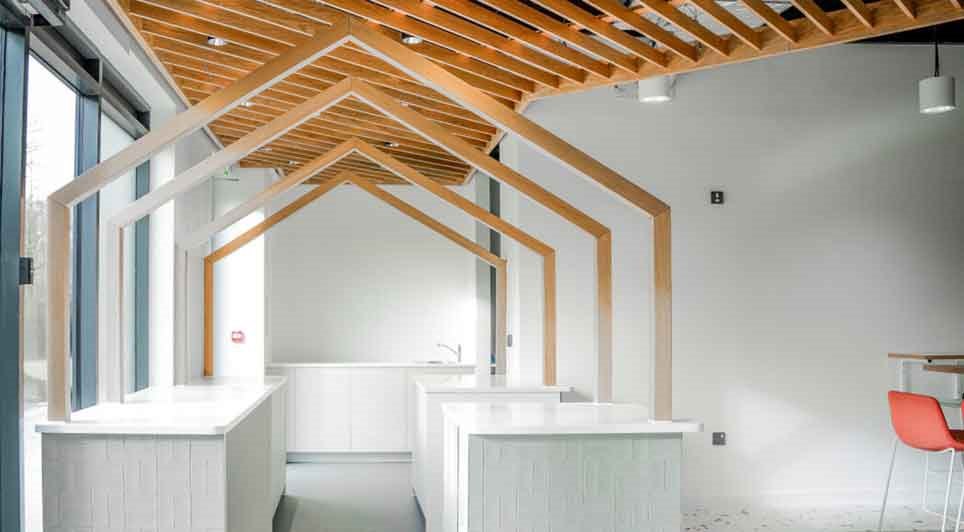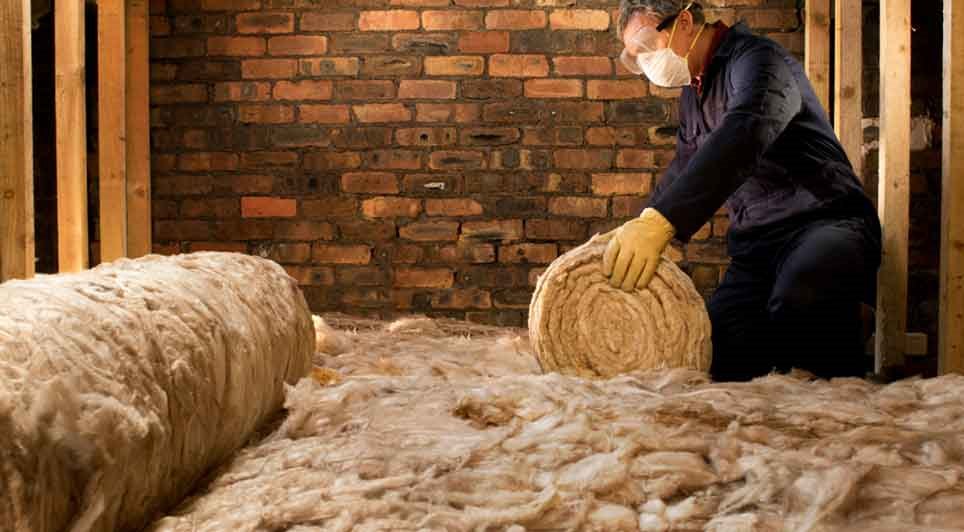A ground floor flat of a converted Victorian Essex property with a basement flat below was surveyed to investigate damp patches on internal walls and a strong damp smell. The survey found a significant damp problem that had occurred due to an ongoing leak from a bathroom pipe underneath the floor of the ground floor flat combined with a lack of drainage allowing for rainwater to collect at ground level and penetrate down through an earth retaining wall.
A further investigation was carried out which involved the removal of the damp plaster and brickwork. This exposed the full extent of the damp and timber problems:
• Wet rot had caused the floor joists to the ground floor flat to rot and decay.
• The timber wall plate and surrounding timbers were heavily decayed due to wet rot. This had extended
to rot the joists particularly those in direct contact with saturated brickwork.
• Dry rot was present in the ceiling joists of the basement flat. It had reached an advanced stage;
mycelium strands and fruiting bodies resembling fleshy pancake-like growths were present.
• Plaster had crumbled and was showing evidence of salting and blistering in certain areas.
Damp, Timber Decay and Dry Rot Treatment Programme
• The property was made watertight to stop any further water ingress and allow the property to dry out. The leak in the pipe was traced and repaired. The lateral penetrating dampness was addressed by laying a new courtyard with a fall and drainage that would allow water to drain away rather than collect.
• The extent of the wet rot damage meant the timber lintel was badly decayed and weakened. It was removed and replaced with a concrete lintel. Other affected timbers were replaced and treated and timber resin beam end repairs were carried out where possible.
• A Dry Rot treatment programme was designed which best suited the site conditions and structure type. This involved a toxic box biocide treatment. Other treatments considered were to naturally dry out the area and heat treatments. These were deemed insufficient relative to the extent of the dry rot.
• A damp proof course and a two-coat cementitious (cement based) waterproof render system was applied to the internal area in contact with the earth retaining wall to provide a sound waterproof barrier and give the property added protection against future water ingress.
The extent of the damp, dry rot and decay to timbers was a clear indication the moisture ingress had been taking place for some time. This had allowed moisture to travel into the fabric of the ground floor flat and then through and down into the ceiling joists of the basement flat. This highlights the damage that ongoing leaks and penetrating damp can cause to a property if left untreated.
Construction News
17/01/2020
ProTen Services Addresses Damp At Victorian Essex Property


25/04/2025
Aston Villa Football Club has unveiled plans to refurbish and expand the iconic North Stand at Villa Park, a major step in the wider regeneration of the North Grounds.
The redevelopment will raise the stadium's total capacity to over 50,000, with the North Stand alone increasing to more than 12,00

25/04/2025
Morgan Sindall Construction's Southern Home Counties team has officially handed over the newly completed Crawley Innovation Centre to Crawley Borough Council (CBC).
The transformation of the former TUI travel house into a cutting-edge innovation, economic and technology hub drew local leaders, busi

25/04/2025
Clowes Developments has confirmed that construction will soon commence on five new trade counter, warehouse and industrial units at Stud Brook Business Park in Castle Donington, following planning approval from North West Leicestershire District Council.
The new development, Plot 1, will feature fi

25/04/2025
A historic 18th-century landmark has been carefully restored as part of the major Garendon Park housing development in Loughborough.
The Grade II* listed Obelisk, located within the grounds of the former Garendon Hall estate, had endured years of weathering before undergoing a sensitive restoration

25/04/2025
Mace has appointed industry heavyweight, Gary Sweeney, to head up its European team working across the Healthcare, Life Sciences and Technology sectors.
Gary joins Mace following a spell as Interim Director in Turner & Townsend’s Advanced Manufacturing, Industrial and Logistics division in the UK

25/04/2025
A groundbreaking ceremony has recently marked the start of a £5.5 million extension project at Thorp Academy in Ryton, Gateshead.
The development, aimed at accommodating the growing student population, is being delivered by Morgan Sindall Construction on behalf of the Northern Education Trust (NET

25/04/2025
Wakefield-based Henley Stone Specialists has been appointed to deliver Glass Reinforced Concrete (GRC) elements for the first phase of 'Our Cultural Heart', Kirklees Council’s flagship project aimed at revitalising Huddersfield town centre.
Part of the Henley Construction Management Group, Henley S

25/04/2025
More than 2,500 Nottingham homes are set to benefit from energy efficiency improvements as part of a major £153 million regional initiative to cut household bills and carbon emissions.
Nottingham City Council's Executive Board has approved the acceptance of nearly £76 million in Government funding

25/04/2025
Introduction: What Is a Fitted Hoist?
A fitted hoist is a mechanical lifting device installed in the home to help safely move individuals with limited mobility. Commonly found in bedrooms, bathrooms and living spaces, these systems make it easier and safer to transfer someone between a bed, chair,

25/04/2025
Rail services between Hereford and Shrewsbury are facing significant disruption following the collapse of an underground culvert, forcing the closure of the line in both directions.
Emergency engineering works are underway to ensure the safety of the railway.
Network Rail's engineering teams are
 UK
UK Ireland
Ireland Scotland
Scotland London
London










